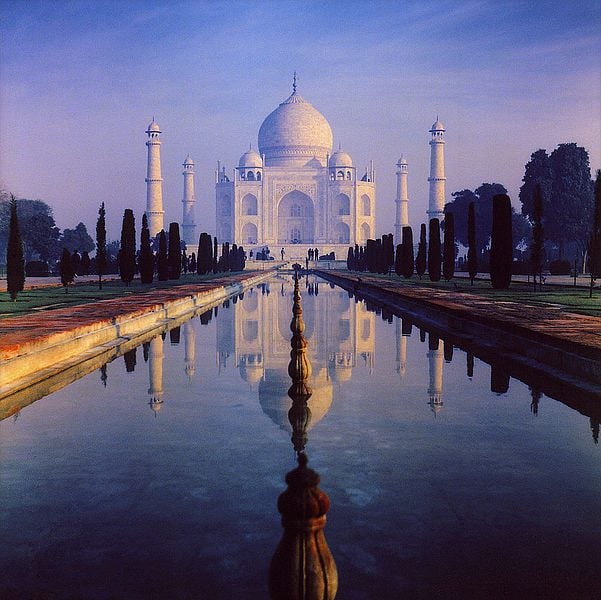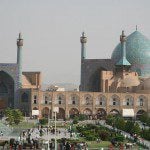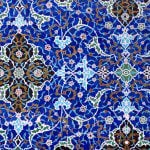
Coming still closer to the present:
As might be guessed from Hodgson’s title for this period, the important fact about the time was gunpowder. This new technology, borrowed from the West (and, ultimately, from China), allowed the existence of greater states and thus permitted greater centralization of power. Putting it less abstractly, the states that adopted the new military technology gobbled up the states that did not. What marks the period, then, is a partial recovery from the political fragmentation that was the special characteristic of the Middle Periods. But if that seems like a healthy development for the Muslims, it should be remembered that the period also saw the beginning of the spectacular rise of the West and its expansion in every direction. Muslim rulers were not aware of it yet, but their states were headed for turmoil.
Three notable Islamic empires flourished during the “Gunpowder Period.” These were the Mogul or Mughal Empire in India, the Safavid Empire in Persia, and the Ottoman Empire in the remainder of the Islamic world. I shall have something to say about each one of these.
As their name indicates, the Mughal or Mogul dynasty derived from Mongol stock, converted to the religion of Islam. They ruled most of India and Afghanistan during the 1500s and 1600s. The most glorious of their sultans was the great city-builder and patron of the arts Akbar the Great, who reigned from 1556 to 1605 and was thus a contemporary of Queen Elizabeth of England. But the best known fact about the Mughals in the West is unquestionably the building of the beautiful Taj Mahal, one of the world’s finest pieces of architecture, during the reign of Shah Jahan (1627-1658).
Early in the 1700s, the empire began to break up. Nevertheless, the Mughals continued to rule a small kingdom centered in the city of Delhi until the British conquest of India in the nineteenth century. It is worth stopping for a moment to consider the remarkable fact that the British were able to complete so stunning an achievement, to reflect that we are tempted simply to say “the British conquest of India” without being properly astonished at the improbability of it. Yet it is amazing to realize that the small island nation of Great Britain was able to conquer the entire Indian subcontinent, thousands of miles away, and to hold it for a long period of time. That they were able to do so is yet another example of the fact that disunity invites conquest. If the Indians had been united and the Mughal Empire intact, the British could never have dreamed of controlling that vast nation.
The Safavis, a Turkish tribe, gained control over areas of Iran in the late 1400s and early 1500s. But the official beginning of the Safavid Empire must be placed in the year 1501, when the tribe’s leader, Ismail Safavi, was crowned shah, or king. It is the Safavids who made Iran a Shiite nation and linked Shiism with the Persians in a firm bond that has never been challenged in the intervening centuries. The greatest ruler of the dynasty was Shah Abbas, who reigned between 1587 and 1629 and was thus himself a younger contemporary of Elizabeth I. He and his successors strongly supported architecture and the other arts, and—something that is considerably more rare—showed remarkable good taste in doing so. The blue and gold mosques of Iran, the Persian miniature paintings that were used to illustrate books of the period, and the magnificent carpets produced by the country’s craftsmen all testify to the remarkable legacy of civilization given to the world by Iran. In 1598, Shah Abbas made the city of Isfahan his capital and devoted himself to planning parks and mosques and large public squares. It rapidly became known as one of the world’s most beautiful cities. But beauty does not abide forever. In 1722, little more than a century after Shah Abbas, fierce Afghan armies invaded Iran and conquered the city, putting an end to the Safavid dynasty.












